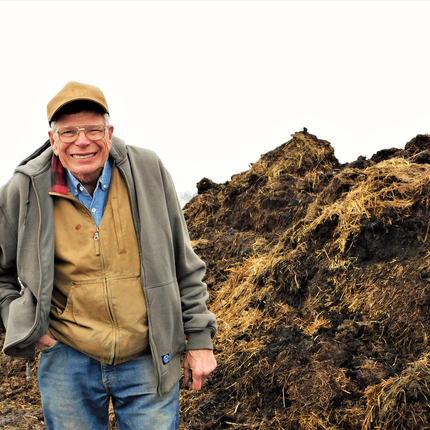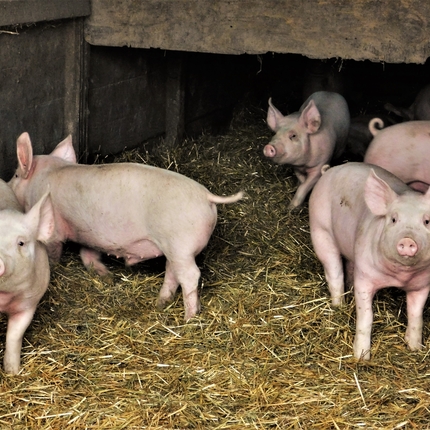Cora Fox contributed to this blog.
This case study was supported by Conservation Innovation Grant funding from the U.S. Department of Agriculture (USDA) Natural Resources Conservation Service. The Center's work through this grant features beginning, women, and veteran producers who use conservation in their farming operations. Stay tuned for information regarding upcoming webinars for beginning, women, and veteran farmers and ranchers. Check out the two-page case study here.
Some people are lucky enough to know exactly what they want to do with their lives. Ben Schole is one of those fortunate few. For him, farming has always been his calling.
The Hooper, Nebraska, native works the land that his father farmed before him—land which has deep roots in their family.
“I always knew I wanted to come back,” he said. “My father retired from farming when he was 73 years old, which gave me the chance to return in 1983. I’ve been farming this land for 35 years, and today, my two sons and their families work the land with me.”
Though he loves farming, Ben hasn’t only focused on agriculture.
Enlisted in the U.S. Army from 1968 to 1971, Ben used the G.I. Bill to further his education at Colorado State University. Later, he worked at Nebraska Game and Parks Commission as a wildlife habitat manager for a decade.
Then, the time was right for Ben to return home to the family farm, and pick up where his father left off.
“My dad raised cattle, hogs, and chicken,” Ben said. “When I was in school and working in the wildlife field, I’d come back to help on the farm during harvest and planting.”
Ben runs the operation as closely as possible to the way his father did—the farm is a diversified operation, which is practical for a small family farm.
“I was very fortunate to also have a great mentor in Del Akerlund, an organic farmer from Valley, Nebraska,” Ben said. “Although I never farmed organically, he helped me immensely to be more regenerative.”
The veteran has never taken on more than 400 acres, to keep the farm at a size that is manageable. He owns 220 acres, and he and his sons each rent additional land of their own.
Though they operate on a limited amount of land, Ben’s youngest son brought cattle back to the farm as a way to expand the operation. They currently raise cattle and heritage hogs, as well as grow corn, beans, wheat, alfalfa, and cover crops for grazing. His daughter-in-law also has a small flock of chickens.
Conservation and fair treatment of the land is of the utmost importance to Ben, so he utilizes different programs such as the Conservation Reserve Program (CRP), Wetlands CRP, and the Conservation Stewardship Program (CSP). The re-establishment of wind breaks, composting of hog’s bedding, and doing split-application of fertilizers, as well as using cover crops like turnips, radishes, and oats, ensures that the land stays at its best.
“Having a land ethic is very important,” said Ben. “More and more farmers are learning that what they do to grow crops and livestock affects soil life, ground and surface water, air quality, and total land health. Aldo Leopold addresses this issue in ‘A Sand County Almanac’ stating ‘A thing is right when it tends to preserve the integrity, stability and beauty of the biotic community. A thing is wrong when it tends otherwise.’”
As time has passed, Ben has allowed his sons to take on more and more of the work on the family farm. He offers this advice to anyone beginning in the agriculture industry.
“Find your passion and a mentor,” he said. “Start small and grow gradually—there is a learning curve. If anything can go wrong, it will. And, bring an enterprise into the farming operation instead of just saying ‘we need more acres.’”
This material is based upon work supported by the Natural Resources Conservation Service, USDA, under number 69-3A75-17-46. Any opinions, findings, conclusions, or recommendations expressed in this publication are those of the authors and do not necessarily reflect the views of USDA. USDA is an equal opportunity provider and employer.






